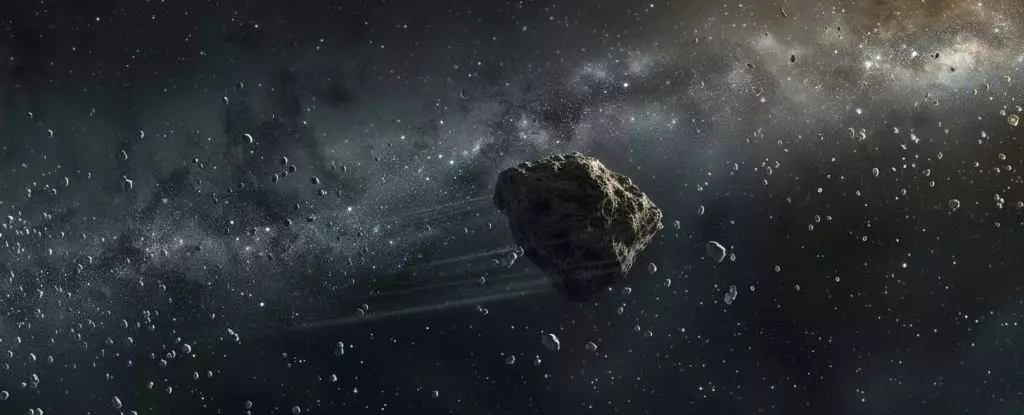As we gaze out into the vast expanse of space surrounding our planet within the Solar System, we are met with a plethora of rocky objects. The tally of near-Earth objects, including asteroids and comets, has reached over 35,000 to date. However, there is speculation that there may be even more lurking out there. A recent study conducted by a team of astronomers led by Aster Taylor from the University of Michigan has shed light on a fascinating discovery – up to 60 percent of these near-Earth objects could potentially be “dark comets.” These enigmatic celestial bodies are believed to have once contained or still contain ice within their rocky structures, providing a tantalizing clue about the origins of Earth’s water.
Within the realm of free-roaming rocks within the Solar System, asteroids and comets are the most well-known categories. Asteroids are composed of dry rocks, while comets are icy rocks that emit material when they approach the Sun and heat up. Dark comets, on the other hand, represent a hybrid category that combines elements of both asteroids and comets. Unlike typical comets with a visible coma and tail, dark comets exhibit non-gravitational acceleration, indicating the presence of ice within their composition. Despite their intriguing properties, dark comets remain a relatively mysterious and poorly understood phenomenon in the field of astronomy.
Taylor and their research team delved into the study of seven known dark comets to gain insights into the prevalence of these enigmatic objects within the near-Earth space. Their findings suggest that a substantial percentage, ranging from 0.5 to 60 percent, of all near-Earth objects could potentially be dark comets. This wide range underscores the need for further research to refine these estimates and uncover the true extent of frozen materials within the Solar System. The implications of these findings hint at the possibility of additional ice reservoirs not only in Earth’s vicinity but also within the asteroid belt situated between the orbits of Mars and Jupiter.
One of the critical aspects of understanding dark comets is tracing their origins and evolution within the Solar System. Through simulations and calculations, the research team inferred that most dark comets near Earth likely originated from the main asteroid belt. The accelerated spin experienced by comets can lead to centrifugal fragmentation, causing them to break apart into multiple icy and gassy fragments. This process results in the formation of new rocks, with one of the analyzed dark comets, named 2003 RM, believed to have been a larger rock expelled from the main asteroid belt. The revelation of centrifugal fragmentation as a mechanism for the generation of dark comets adds another layer of complexity to the study of these intriguing celestial bodies.
The discovery of dark comets and their potential role in delivering water to Earth offers a fascinating insight into the interconnectedness of celestial bodies within the Solar System. The ongoing research and exploration of near-Earth objects, including dark comets, will undoubtedly lead to further revelations and deepen our understanding of the origins of our cosmic neighborhood. As we continue to unravel the mysteries of the universe, dark comets stand as a testament to the complexity and diversity of celestial phenomena that continue to captivate and inspire astronomers and enthusiasts alike.


Leave a Reply